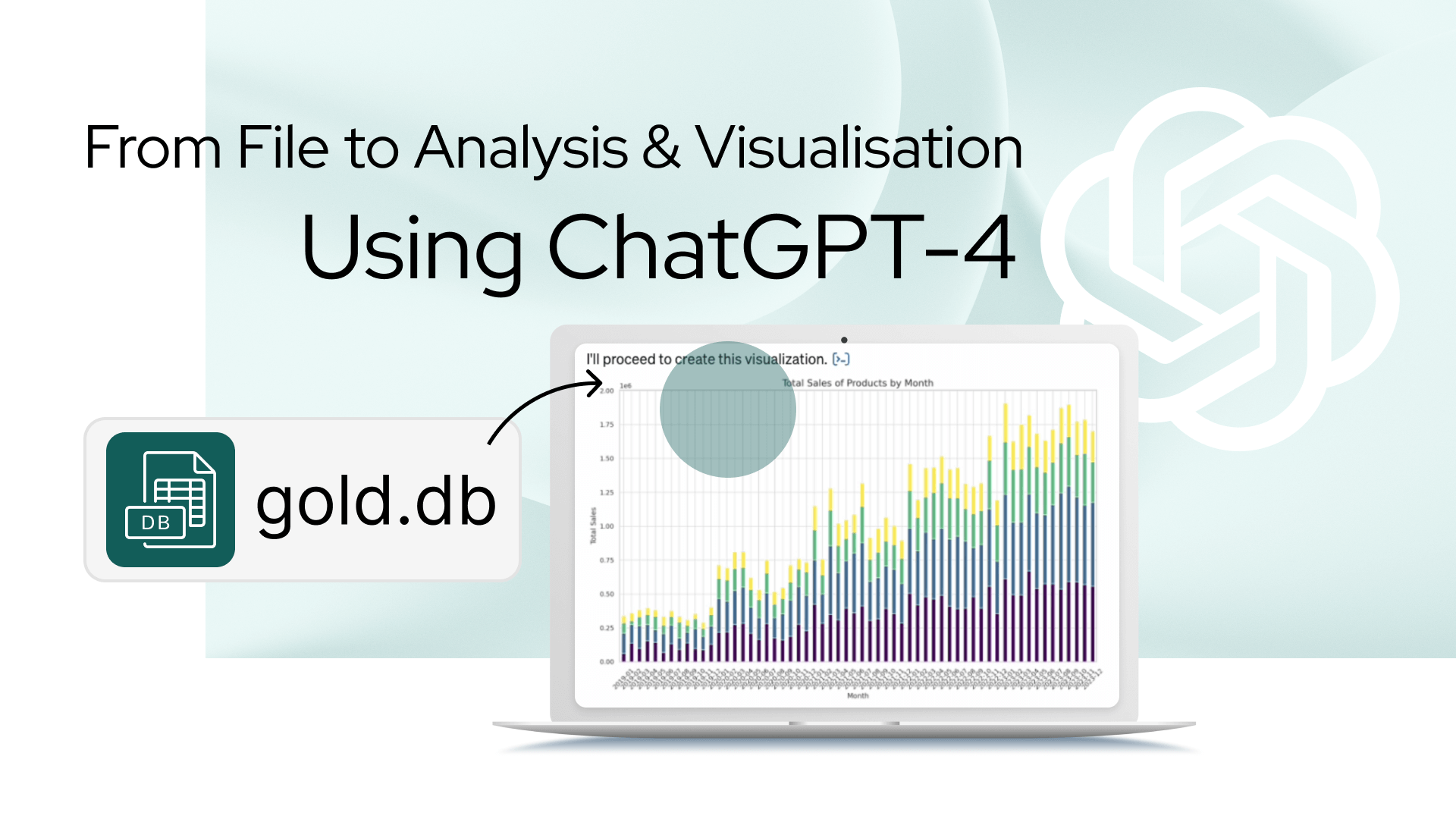Part 4: Save Time and Analyze the Database File (gold.db) with GPT-4
In data management, speed and efficiency play a vital role. The emergence of advanced AI tools, such as ChatGPT-4, has significantly transformed the field of database analysis. Leveraging its improved language understanding and processing capabilities, ChatGPT-4 enables you to analyze database contents with just two simple steps (copy and paste), facilitating well-informed decision-making. In this blog post, we will explore the required steps and necessary components for this process.
Step 1: Preparing your database file
Prior to utilizing ChatGPT-4, ensure your database is formatted in a way that can be easily interpreted. For the majority of databases, this involves converting data into either a CSV, JSON, or SQLite format. This essential step prepares your data for a smooth integration with the processing capabilities of the AI.
Step 2: Uploading and analyzing with ChatGPT-4
Once your database file is ready, you can upload it directly to the interface of ChatGPT-4 (copy and paste it). This powerful AI can handle a variety of data analysis tasks, such as:
Data summarization: ChatGPT-4 can quickly provide summaries of your data, highlighting key statistics and trends.
Pattern recognition: The AI can identify patterns and anomalies in your data, which might be critical for your analysis.
Query response: ChatGPT-4 can answer specific queries about your database, providing insights that would take much longer to derive manually.
What you need
Access to ChatGPT-4
A database file
A specific and logical prompt
Practical example: Suppose you possess a database file from a brokerage firm specializing in the sale of gold and related products. Your objective is to assess the overall sales of products on a monthly basis. Additionally, you need to construct a chart illustrating the total sales of products each month, grouping the sales data by product types.
Transforming the .db file into analysis & visualization - a step-by-step guide:
First, open ChatGPT-4
When opened, it looks like this ☝️
Paste the downloaded .db file into the ChatGPT-4 chat bar
Promt a question, for example:
“You are a data engineer and have a sqlite3 database with the following file. Write a python script that you can run in a Jupyter notebook that draws a diagram. The database contains sales data from a gold broker company. Create a chart that shows total sales of products by month. Group all sales by product types.”
(When specifying your desired functionality, consider requesting summaries, trends, or particular analyses to be performed.)Press the launch button (⬆️) in ChatGPT-4 and let it do the required analysis of your data.
After a few moments, the results of your data analysis, based on the question you asked, will appear simply and quickly and you can modify them as you wish.
The final result. (You can add some modifications to the chart, such as numbers, colors, and titles)
This video demonstrates the process from sharing the file to obtaining the data visualization:
Interpretation of results
Ensuring accurate interpretation of the results is essential. While AI delivers precise insights, grasping the context and recognizing the limitations of the data is crucial for making well-informed decisions.
Features of data analysis with GPT-4
There is no need for complex setup: There’s no need for setting up a database connection or configuring a data analysis environment, which can be time-consuming and require technical know-how.
There is no need to setup languages & libraries: No need for setting up Python, Python libraries, Jupiter Notebook, or other programming languages.
Accessibility and ease of Use: ChatGPT-4 is highly accessible and easy to use. Users can simply copy and paste data into the chat, making it suitable for people who may not have advanced technical skills or access to specialized data analysis software.
Natural language processing: ChatGPT-4 excels at understanding and processing natural language queries. This means users can ask questions about their data in natural language, without needing to know complex query languages or programming.
Cost-effective: For small-scale or occasional data analysis needs, using ChatGPT-4 can be more cost-effective than investing in specialized data analysis software or tools.
Flexibility in data interaction: Users can interact with their data in a conversational manner, allowing for a more dynamic and flexible approach to data analysis. This can lead to discovering new insights as the conversation progresses.
Multifaceted analysis: ChatGPT-4 can assist in various types of analysis: From basic data summaries to more complex inquiries, depending on the nature of the pasted data and the user's queries.
Educational value: For learners or students, using ChatGPT-4 provides an educational opportunity to understand data analysis concepts and practices in a hands-on manner.
Conclusion
ChatGPT-4's ability to facilitate speedy data analysis of databases marks a significant advancement in data management. By efficiently processing and interpreting large datasets, it enables businesses and individuals to make quicker, more informed decisions. As technology continues to evolve, the integration of such AI tools in database analysis is poised to become more prevalent, redefining the standards of data handling and management.
☝️ Remember, this is a simplified overview and the actual process might involve more intricate steps, especially for larger or more complex databases.



